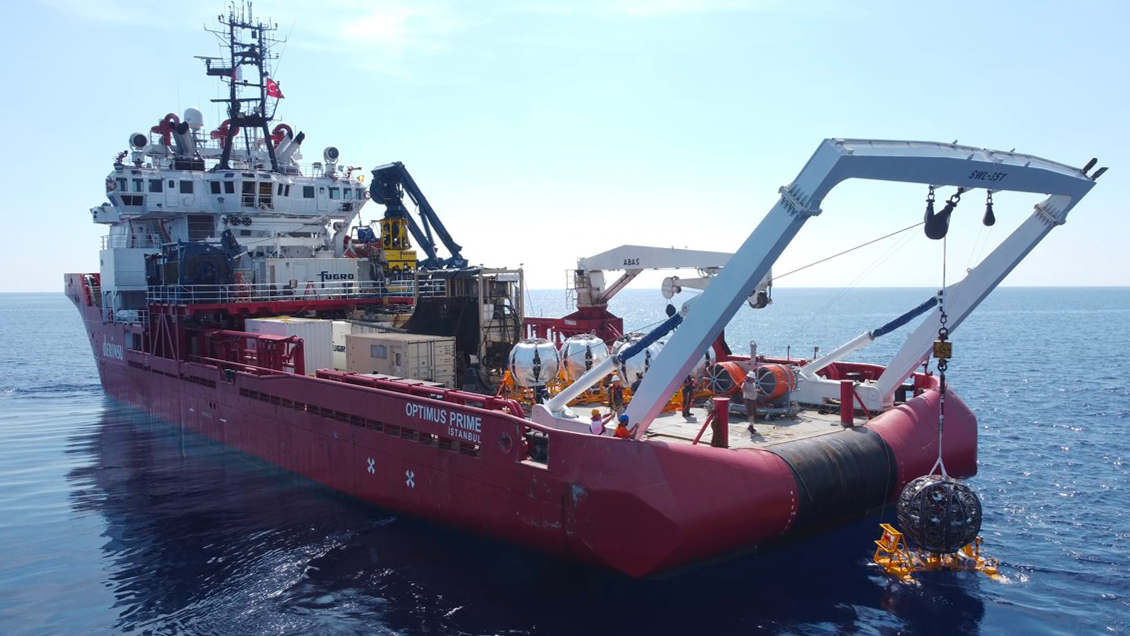
The complex marine operation carried out by the KM3NeT Scientific Collaboration at the abyssal site off Capo Passero, in Sicily, was successfully concluded last September 21. The goal of the operation was to expand the ARCA (Astroparticle Research with Cosmics in the Abyss) apparatus of the KM3NET submarine telescope.
KM3NeT is the ambitious international project for neutrino research in the Mediterranean Sea. It includes the ARCA submarine apparatus, for searching for cosmic neutrinos up to extreme energies, and ORCA (Oscillation Research with Cosmics in the Abyss), dedicated to the study of neutrino oscillation mechanisms. The ARCA apparatus consists of a network of strings, called detection units, anchored to the seafloor. Each string is up to 700 meters high and equipped with more than 500 ultra-sensitive detectors (photomultipliers) installed in 18 optical modules.
The operation was conducted with the Optimus Prime ship, equipped with a FUGRO submarine vehicle capable of operating at the required depth of 3,500 meters, which operated almost continuously for two weeks. It was carried out as part of the PACK (Apulia-Campania KM3NET Upgrade) project, funded by the Italian Ministry for Universities and Research under the National Operational Program “Research and Innovation” 2014-2020. Upon completion of the operation, procedures were started to configure the submarine telescope to activate the data-taking phase with 28 detection units, which are equipped with more than 15,000 photomultipliers in total.





